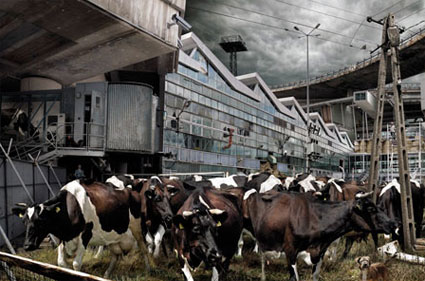The Garden City Movement was founded by Ebenezer Howard in 1898 as an urban planning system, which made the central city, the garden cities and the country in between to be a self-sufficient unit generating under a specific rule. Howard believes that this rule, which carefully balances area of residences, industry and agriculture, would solve the problem of city’s growth.
Containing advantages of both town and country, these organized garden cities would withdraw the magnetism of the central city. Once the magnetism is reduced, there would be no longer endless expansion of the central city with population inflation.
Two garden cities were designed according to garden city principals which also influence the United States. The idea of ‘garden city’ is transferred into ‘garden suburb’ which is more practical. Without the commercial and industrial components of the garden city, the garden suburb is just a residential area. The quality of living is improved without the magnetism decreased.
According to the United Nations, more and half of world’s population live in urban areas since last year, which shows cities still keep attractive for most of people. In some developing city such as Shanghai Parks and gardens become more and more precious while the land price is rising. The enlargement of city could not be avoided. High-rises are always used to broaden the central of the city in vertical.
In the same way, a city could get to be a high-rise. When the country is laid above the town or the city, a new kind of garden city comes up. Elevators or tunnels will be substituted for highways, which quickly connect city and country.






